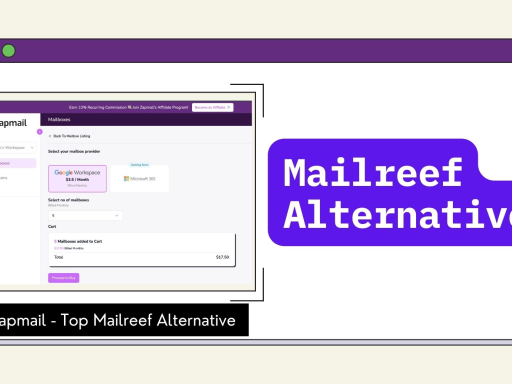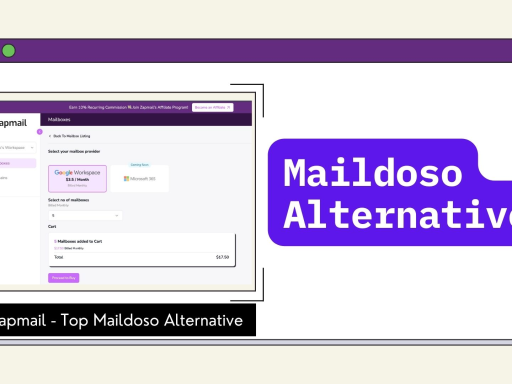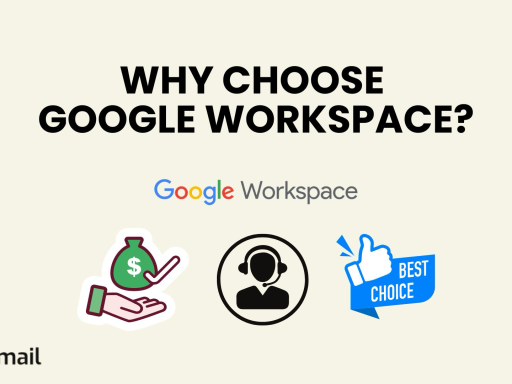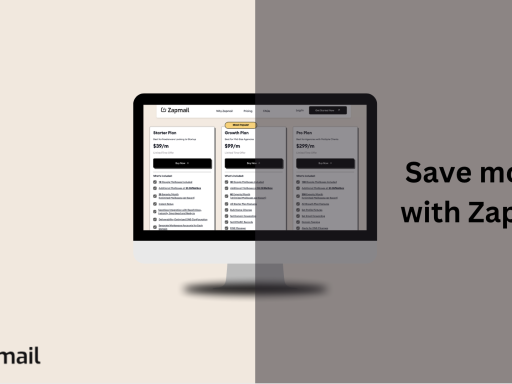Email is a key tool for reaching out to businesses and engaging with customers. Google Workspace and Microsoft Office 365 are top choices for email services. Choosing the right one can greatly affect your cold email campaign’s success.
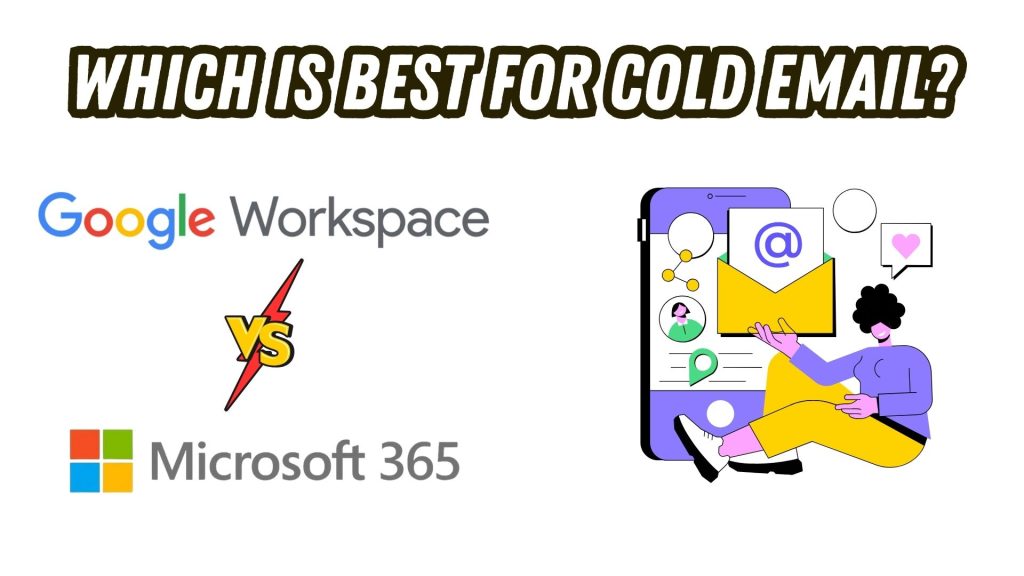
This article will compare Google Workspace and Office 365. We’ll look at their main features, capabilities, and what to consider for cold email. This will help you pick the best platform for your needs.
Key Takeaways
- Google Workspace and Office 365 are top email services, each with unique features for cold email campaigns.
- Gmail (Google Workspace) is the biggest email service worldwide and is great for cold emailing because it’s trusted and reliable.
- Google Workspace is easier to use for cold email, while Office 365 offers more customization options.
- It’s important to think about how well the email service works with automation tools and the domain provider.
- For successful cold email campaigns, personalization, email warmup, and using specialized software are key, no matter the email service.
What are Google Workspace and Office 365?
Google Workspace and Office 365 are top productivity suites. They have tools like email, calendar, and file storage. They also have features for working together. Both give you professional email addresses for cold emailing. This helps you look professional and boosts your email delivery.
Overview of Google Workspace and Office 365
Google Workspace and Office 365 are top choices for businesses and professionals. Google Workspace has cloud apps like Gmail and Google Drive. Office 365 has both desktop and cloud apps, like Outlook and Excel.
Professional Email Addresses for Cold Email

For cold emailing, having professional email addresses is key. You can use your own domain (e.g., [email protected]). Both Google Workspace and Office 365 let you do this. This makes your brand look credible and trustworthy.
Using professional email addresses also helps with getting your emails delivered and opened. This is much better than using personal email accounts.
Email Sending Limits: Google Workspace vs Office 365
When you’re into cold email outreach, the daily email limits from your service provider matter a lot. Google Workspace and Microsoft Office 365 have different limits that affect your email marketing plans.
Google Workspace lets you send 100 messages via SMTP and 500 emails through the browser per user account daily. Also, try not to send more than 20 messages per hour from a free Gmail account to keep your sender reputation good. Office 365, on the other hand, has a higher limit of 10,000 recipients per user account, with a cap of 30 messages per minute.
Remember, these limits can change and may not always match what’s advertised. Things like how long you’ve had your account, how often you use email, and if your account is verified can affect your actual sending limits and how well your emails get delivered. For instance, Outlook.com accounts with a solid reputation can send up to 300 emails daily. GoDaddy Workspace users can send up to 250 recipients a day, and you can increase it to 500 for more money.
It’s smart to not send too many emails at once to avoid being seen as spammy. Instead, focus on making your emails better and more personal. This way, your cold email campaigns will work better and keep your sender reputation positive.
Security Features: Keeping Your Communications Safe
When you’re doing cold email outreach, keeping your messages safe is key. Google Workspace and Office 365 have strong security tools to protect your data and accounts.
Two-factor Authentication and Encryption
These platforms add an extra security step with two-factor authentication. This means you need a second thing to prove who you are (like a code on your phone) when you log in. They also use encryption to keep your emails and documents safe. This keeps your important info private.
Google Workspace checks your messages for things like social security numbers right away. It also works with other security tools through its marketplace. Microsoft 365 has a security center for managing everything and stopping cyber threats.
| Security Feature | Google Workspace | Office 365 |
|---|---|---|
| Two-factor Authentication | ✔ | ✔ |
| Encryption | ✔ | ✔ |
| Centralized Security Management | ✔ | ✔ |
| Advanced Threat Protection | ✔ | ✔ |
| Compliance Certifications | ✔ | ✔ |
Google Workspace and Microsoft 365 have tools like anti-phishing and stopping data loss. They also have compliance features and certifications for different industries. Businesses should pick the one that meets their security and rules needs.
Key Features for Cold Email Outreach
Google Workspace and Office 365 can greatly improve your cold email outreach. They offer tools and integrations that make your work easier and your campaigns more effective. These platforms go beyond just sending emails.
Google Workspace works well with other Google tools like Google Drive, Docs, and Sheets. This means you can share files and documents easily from your email. Office 365 works with Microsoft Office, letting you use Word, Excel, and PowerPoint in your emails.
Both platforms make it easy to set up meetings and follow-ups with your emails. This helps keep your outreach moving forward and keeps people interested.
Google Workspace and Office 365 also have tools to help your email outreach. You can schedule emails, use templates, and track how well your campaigns are doing. These features make your work more efficient and your messages more personal.
In the end, the features of Google Workspace and Office 365 are key to better cold email outreach. They help you work better, collaborate more, and get better results.
User Interface and Experience
The user interface and experience of an email platform are key to the success of your cold email outreach. Google Workspace and Office 365 have different approaches to their interfaces. Each has its own strengths and things to consider.
Navigation and Ease of Use
Google Workspace is known for its simple and intuitive design. It makes it easy for users to handle their email, calendars, and other tools. Features like Gmail, Drive, and Calendar work together smoothly, making it easier to get started.
Office 365, on the other hand, might be a bit harder to learn at first. Its interface is more complex, offering lots of customization options. This can give users more control but takes more time to learn the various tools and apps.
Choosing the right platform for your cold email outreach depends on how important ease of use and feature integration are to you. If you like simple and quick setup, Google Workspace might be the better choice. But if you need more advanced customization, Office 365 could be the way to go.
| Feature | Google Workspace | Office 365 |
|---|---|---|
| User Interface | Clean, intuitive layout | More complex, offers deeper customization |
| Navigation | Straightforward, easy to manage | May require more time to learn |
| Integration of Features | Seamless, enabling a streamlined workflow | Robust, but may require more setup and configuration |
| Learning Curve | Short, easier for users to adapt | Steeper, with more advanced customization options |
Pricing Plans and Comparison
Choosing between Google Workspace and Office 365 for your cold email outreach is important. You need to look at the pricing. Both offer plans for different business needs and budgets.
Google Workspace, now known as G Suite, starts at $6 per user per month for the Business Starter plan. This plan gives you basic email and productivity tools like Gmail and Google Docs. For more features and storage, the Business and Enterprise plans cost $12 and $25 per user per month.
Office 365 has its own pricing. The Business Basic plan costs $5 per user per month. It gives you online versions of Outlook, Word, Excel, and PowerPoint. The Business Premium plan, at $12.50 per user per month, adds desktop versions and more storage and collaboration tools.
| Plan | Google Workspace | Office 365 |
|---|---|---|
| Starter/Basic | $6 per user per month | $6 per user per month |
| Standard | $12 per user per month | $12.50 per user per month |
| Plus/Premium | $18 per user per month | $22 per user per month |
Looking at the pricing and features of Google Workspace and Office 365 can help you pick the best option for your cold email outreach. Both offer various plans for different business sizes and budgets.
Google Workspace vs Office 365: Which is best for cold email?
Choosing the right platform for cold email outreach is crucial. Google Workspace and Office 365 both have great features. Google Workspace is easier to use, but Office 365 lets you send more emails and might deliver them better.
G Suite (Google Workspace) is the top choice with 56.97% of the market. Office 365 follows with 42.63%. But, Google has 12 times more inboxes than Outlook in a sample. Google inboxes also get into the main inbox 94.18% of the time, just a bit less than Outlook’s 95.38%.
Google Workspace lets you send about 1,000 emails a day. Office 365 allows up to 2,000 emails daily. Office 365 is also better at getting emails to your recipients, starting campaigns sooner.
| Feature | Google Workspace | Office 365 |
|---|---|---|
| Market Share | 56.97% | 42.63% |
| Primary Inbox Delivery Rate | 94.18% | 95.38% |
| Daily Email Sending Limit | ~1,000 emails | ~2,000 emails |
| Warm-up Period | N/A | ~4 weeks |
Choosing between Google Workspace and Office 365 for cold email depends on what you prefer and your outreach needs. Look at sending limits, security, and features to pick the best fit for your strategy.
Integration with Third-Party Cold Email Tools
Choosing between Google Workspace and Office 365 for cold email outreach is key. You need to think about how well they work with popular email automation tools. Both platforms work with big names like Saleshandy, Mailchimp, and HubSpot.
Compatibility with Popular Email Automation Tools
It’s important for your email service and cold email tools to work well together. This makes things like automated email sequences, managing contacts, and tracking performance easier.
- Google Workspace works well with many third-party tools, including top email automation solutions.
- Office 365, through Microsoft Outlook, also works with a lot of email automation and cold email platforms.
- Knowing how Google Workspace and Office 365 integrate with other tools helps you pick the best one for your cold email workflow.
Picking an email service that matches your email automation tools makes your cold email outreach better. It boosts your productivity and makes your campaigns more effective.
The Role of Domain Providers
Choosing the right domain provider is key to successful cold email campaigns. Your domain’s reputation and email authentication protocols like SPF, DKIM, and DMARC affect email deliverability. When picking between Google Workspace and Office 365, think about your domain provider too. Make sure it’s set up right to boost your email deliverability.
A good domain provider can greatly help your cold email campaigns. They set up email authentication, which is crucial for a strong domain reputation. This boosts your chances of your emails getting to the inbox. This is vital when you’re reaching out to people who don’t know your brand yet.
| Feature | Google Workspace | Office 365 |
|---|---|---|
| Domain Reputation | Google Workspace relies on your domain’s reputation for email deliverability. | Office 365 also stresses the need for a good domain reputation for emails to reach their destination. |
| Email Authentication | Google Workspace has tools for setting up SPF, DKIM, and DMARC for better email security. | Office 365 offers similar tools for email authentication, letting you set up SPF, DKIM, and DMARC. |
| Sender Reputation Monitoring | Google Workspace includes tools to monitor sender reputation and fix any deliverability problems. | Office 365 also has sender reputation monitoring to keep your domain’s reputation positive. |
When deciding between Google Workspace and Office 365 for cold email outreach, think about your domain provider’s role. Make sure it’s set up to improve your email deliverability. With a reliable domain provider and the right email authentication, you’ll increase your cold emails’ chances of reaching the inbox. This will help make your outreach campaigns more successful.
Tips for Successful Cold Email Campaigns
Choosing between Google Workspace and Office 365 is just the start for your cold email outreach. To make your cold email campaigns successful, follow some key best practices. This includes proper email warmup and account management. It’s also vital to send personalized and segmented messages that hit the mark with your audience.
Email Warmup and Account Management
Warming up your email accounts, whether they’re Gmail or Outlook, is key. It helps build a good sender reputation and prevents delivery problems. Start by sending more emails gradually and interact with your contacts to show you’re real.
Managing your email accounts well is also important. Use different addresses and keep your email sending steady. This makes your cold email outreach more effective.
Personalization and Email Segmentation
Personalizing and segmenting your cold email campaigns is crucial. Make sure your messages address your audience’s specific needs and interests. This can greatly boost your open and response rates.
Google Workspace and Office 365 have tools to help with this. They offer contact management and data integration. Segmenting your email lists by industry, job title, or specific needs also helps. This way, you can send more targeted and effective cold email outreach.
Conclusion
The debate between Google Workspace and Microsoft 365 for cold email outreach is ongoing. Both platforms have great features that help businesses of all sizes. The choice depends on what you need and what your cold email strategy requires.
When picking a platform, think about email sending limits, security, how easy it is to use, the cost, and how well it works with other tools. Google Workspace is known for its flexibility and is popular with younger people. Microsoft 365 is a top choice for its advanced features, especially in Excel.
No matter if you choose Google Workspace or Microsoft 365, using best practices for email warmup, managing your account, making emails personal, and segmenting your audience can boost your cold email campaigns. By using the best of both platforms, you can create a solution that fits your business’s needs and the changing world of cold email outreach.
FAQ
What are Google Workspace and Office 365?
Google Workspace and Office 365 are full productivity suites. They include email, calendar, file storage, and tools for working together. Both give you professional email addresses for cold emailing.
What are the key differences in email sending limits between Google Workspace and Office 365?
Google Workspace lets you send up to 2,000 emails a day per account. Office 365 allows sending to 10,000 recipients daily. But, actual limits might be lower in real use.
What security features do Google Workspace and Office 365 offer?
Both offer two-factor authentication and encryption. These ensure your messages and shared documents stay secure and private.
What features can enhance cold email outreach in Google Workspace and Office 365?
Features like calendar integration, file sharing, and productivity tools help make your cold email campaigns better. They boost efficiency and effectiveness.
How do the user interfaces and overall experiences differ between Google Workspace and Office 365?
Google Workspace has a clean, easy layout and simple navigation. Office 365 might be more complex, with a steeper learning curve and more customization options.
How do the pricing plans compare between Google Workspace and Office 365?
Google Workspace starts at $6 per user monthly. Office 365 Business Basic is $5 per user monthly. Higher plans for both offer more features and storage.
How important is integration with third-party cold email tools when choosing between Google Workspace and Office 365?
Good integration with cold email tools is key. It makes outreach smoother with automated sequences, contact management, and tracking performance.
What is the role of domain providers in successful cold email campaigns?
Domain providers affect email deliverability. Things like domain reputation and email authentication can help your messages get to the inbox, not the spam folder.
What are some best practices for successful cold email campaigns?
For success, warm up your email accounts, manage them well, and personalize and segment your emails. This boosts open and response rates.
